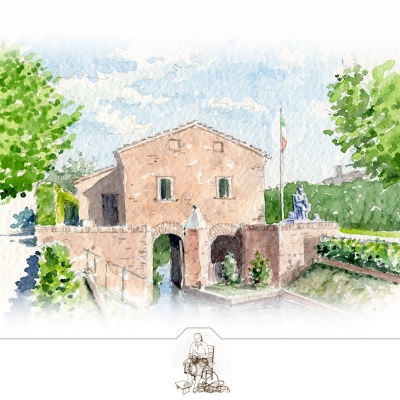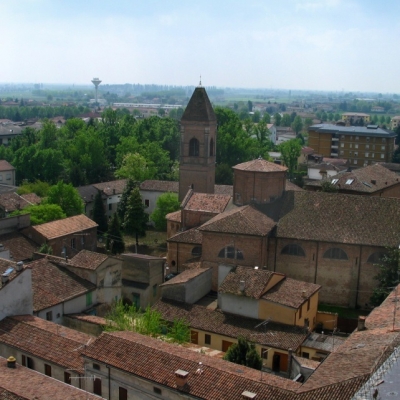Church and Former Convent of the Augustinians
Also known as the church of the former hospital or church of the “Conventino”. It was built at the end of the 15th century by the will of Caterina Pico - Marquis of Luzzara Rodolfo Gonzaga’s wife. It was nearly destroyed to the foundations and reconstructed between 1764 and 1771. Fortunately, the 15th-century apse has been left intact. The sacristy hosts the remains of a funerary monument - dedicated to Luigi Gonzaga, who died in 1570 - partially destroyed by a fire in 1918. In the upper part of the monument, in the very centre, it is possible to admire the Gonzaga coat of arms - borne up by two putti and dominated by a two-headed crowned eagle. The monument stands on an architrave borne by two large statues: a Caryatid and an Atlas. From the centre, under the ledge and borne by a lion’s head, a fruit festoon passes over the Caryatids and descends towards the outer sides, up to the large corbel of the base, where two eagles are placed. The monument also housed a plaque dedicated to Luigi Gonzaga. Frescoes of historical and artistic interest have been recently discovered under the adjacent porch.
As for the actual convent, it was built by the Augustinians, probably before the church itself, in Romanesque style: the porch and some so-called vaults “a vela” - still existing despite the many changes that took place over the time - remain as evidence of it. The fresco by painter Francesco Monsignori representing Madonna and Child, and two Saints on the sides, was destroyed by a fire in 1918. In 1824, after the Augustinans left during the Napoleonic Era, the building was used as a hospital for the sick, by the will of Marie Luoise, Duchess of Parma, Piacenza, and Guastalla. Even when the Lodigiani family became owner of the church, in 1886, it kept serving the same function. Later on, it was donated to the “Opere Pie” (Charity) of Luzzara, an organization that managed the church until 1978, using it first as a hospital and then as a retirement house. The wing of recent construction (1948) on the south side is in complete harmony with the more ancient building. The closure of hospitals and infirmaries became effective after the construction of the Guastalla hospital. As a consequence, the church - after a series of adaptation works - was transformed into the seat of the National Exhibition and Museum of Naive Arts.



